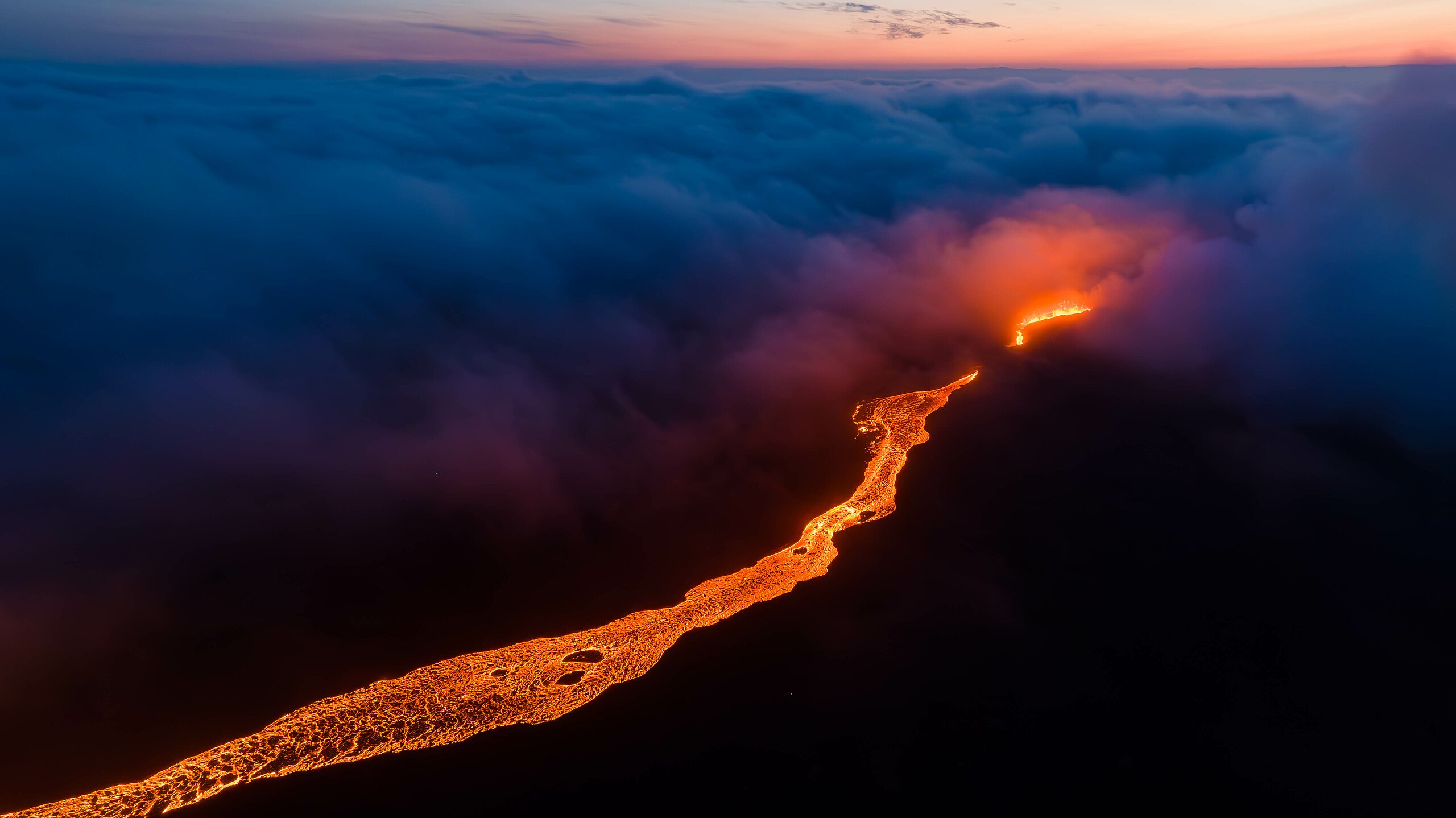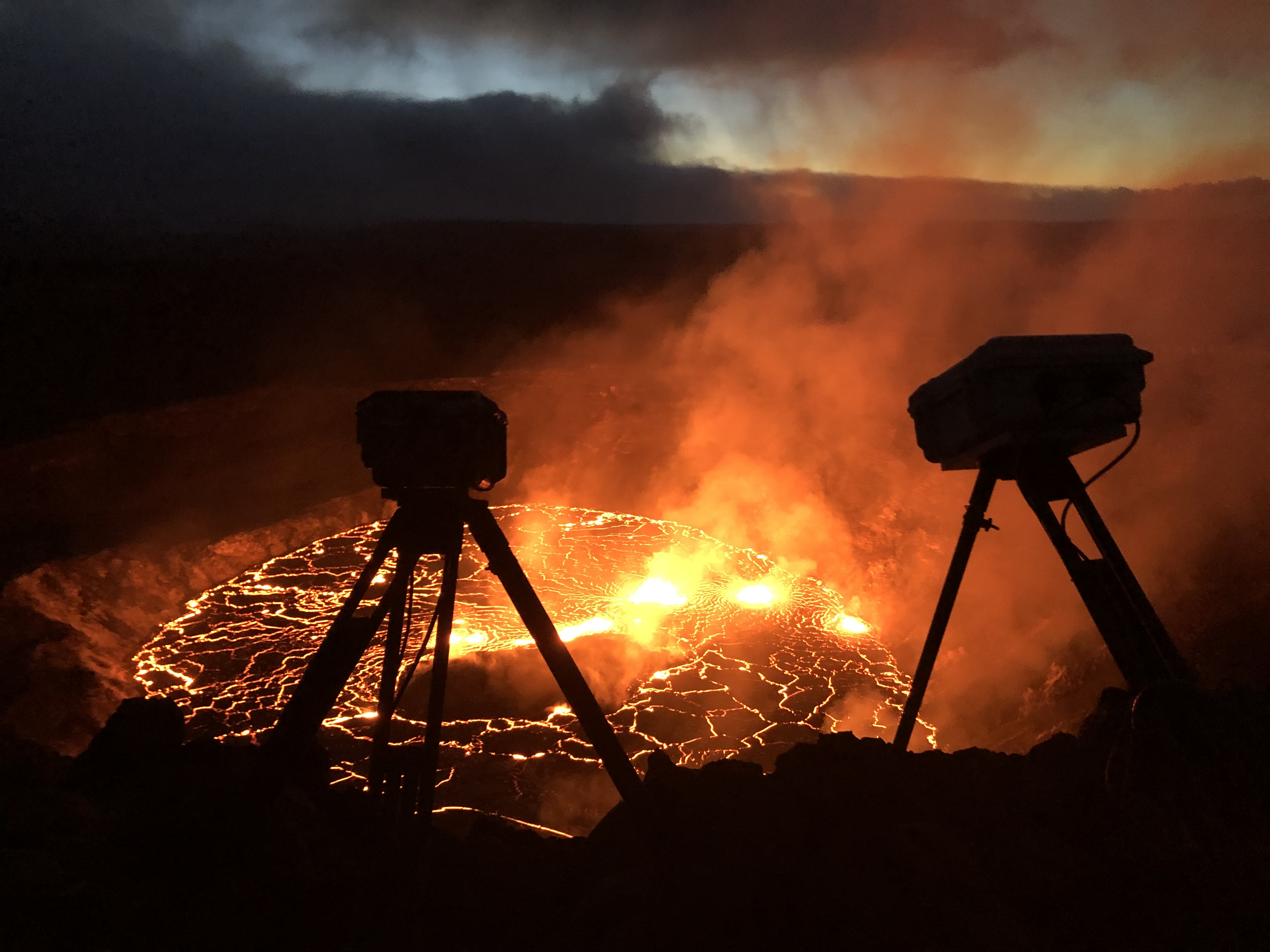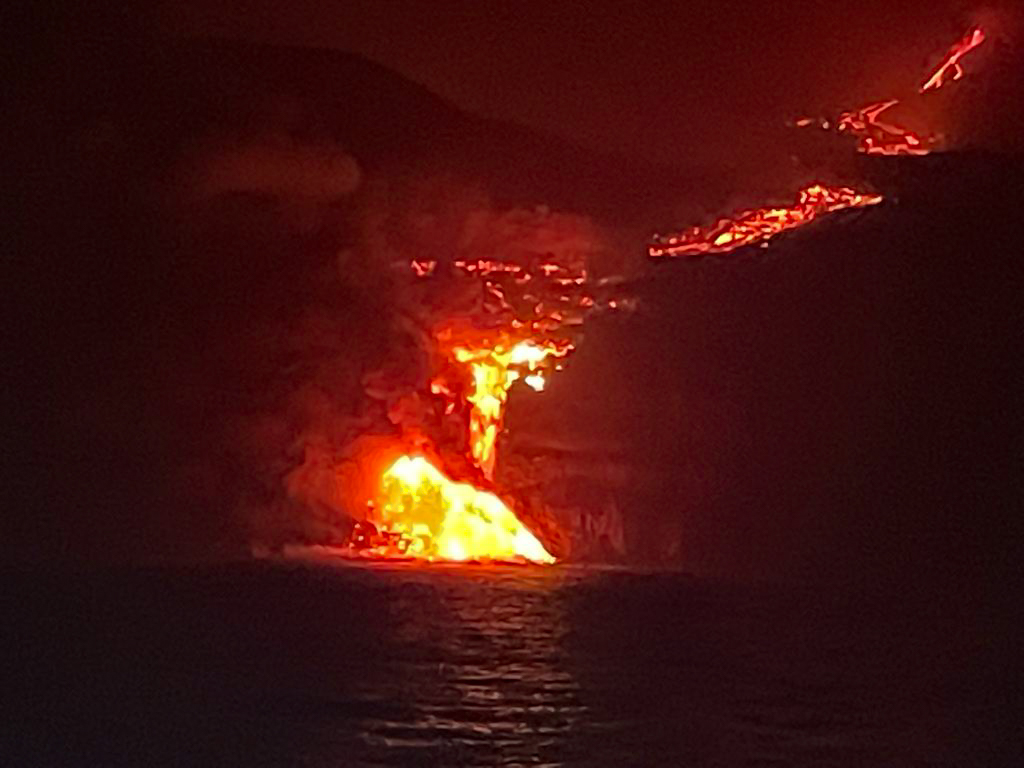Tag: LAZE
Iceland Eruption Nearly Inevitable; Grindavík Could Go Under Lava

Up til now, volcanic eruptions on Iceland’s Reykjanes Peninsula were benevolent tourist attractions. They put on pretty shows and confined themselves to remote, unpopulated areas, clustered around Fagradalsfjall. No important infrastructure was harmed. People got to hike up and safely experience the birth of a new volcano. It was as good as volcanic eruptions get.
Previous Fagradalsfall Eruption Sites. Credit: Icelandic Meteorological Office
Magma started intruding under Fagradalsfjall in September, just a couple of months after the end of its third eruption. Until late October, it didn’t look like things would get too exciting. But a seismic swarm started near the Blue Lagoon area just north of Grindavík late on the 24th and ramped up dramatically overnight. Over one thousand earthquakes, the largest a M4.5, were recorded overnight, most at a depth of around 5 kilometers. By the next day, the numbers had risen to 4,000, some as shallow as 2 kilometers. And the ground was beginning to deform.
On the 27th, horizontal ground displacement was already up to 2 centimeters, and a M4.0 was recorded just 2 kilometers north of Grindavík. Yikes.
But magma hadn’t started moving on up yet.
Madame Pele Breezes Back In

This post first appeared on Patreon. To support this site and gain early access to select posts, plus behind the scenes, sneak peeks, and exclusive content, become a patron today.
Allow me to set the scene: bugger-all was going on at Kilauea Volcano. Madame Pele had shut up shop in May and taken a luana iki (little rest). Perhaps she paid a visit to Iceland’s bouncing baby shield volcano. She may have stopped by La Palma to give her cousin some encouragement.
Back at Kilauea, there were a few rumbles in late August, with an intrusion of magma to the summit. But after that delivery, nothing much happened for most of September. It seemed to many that Pele’s luana iki might turn in to a long winter’s nap.
Madame had no such plans.

Timelapse showing the onset of the eruption. Watch the lower right tip of the island at the beginning – that frame is looped so you can see the uplift right before the vent opens. Click here for a full-size image. Credit: USGS
The Lowdown on LAZE: La Palma Eruption’s Most Recent Hazard

The lava flow from La Palma’s ongoing eruption has reached the Atlantic Ocean. The news is full of people talking about how hazardous this is: you can get all kinds of explosive interactions between water and molten rock. There’s also the little matter of LAZE. Now seems like the perfect time to bring you this article, first published at Scientific American Blogs, telling you what to expect from those dense white plumes.
And I’d also like to take this opportunity to remind you why it’s a terribad idea to sail too close to an ocean entry. Keep your distance!
Kilauea’s most recent lava flows reached the sea over the weekend, and they’ve been beach bumming ever since. Few things are as dramatic as molten rock contending with seawater. We’ll be talking about all the neato things that are happening and that we may see if the eruption continues. We’re starting with LAZE, which in this case isn’t something you do on a hot summer afternoon. It’s this:

A dense LAZE plume rises from the Pacific Ocean during Kilauea’s 2018 eruption. Credit: U.S. Geological Survey
When blazing hot lava meets seawater, the interaction between them boils the water and produces enormous plume of mist, called LAZE (lava haze). These plumes are, of course, mostly water vapor, but they are so much more than that. They’re acidic beasts carrying appreciable amounts of hydrochloric acid, hydrofluoric acid, sulfate anion, carbon dioxide, and nitrogen dioxide, plus traces of volcanic glass and other particles. Even if you could find a safe place near where the lava is pouring into the ocean, you wouldn’t want to be hanging out there without industrial-grade protection.
Sounds super scary, right? Well, it’s concerning. But don’t panic. It, like so many of Kilauea’s other dangers, is something you can protect yourself against with a little common sense and caution. And it’s really pretty neat. (more…)

